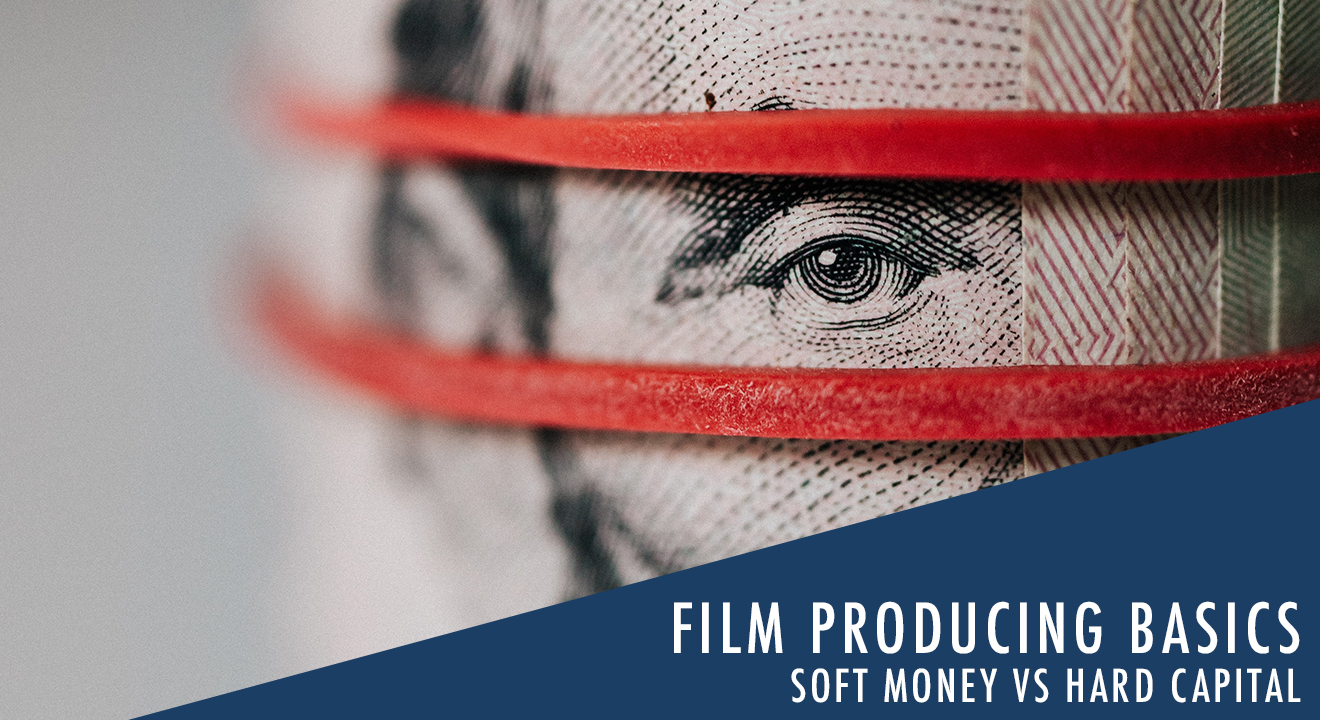We’ve all heard this before…
“I have a great idea for a movie. Now I just need the money!”
It’s the age old challenge every film producing would-be faces. Surprisingly, even in the internet-age, there is little to no information out there on the topic of film financing. This is in part because the landscape changes so much and the flagpole is constantly being moved. Many first time filmmakers have no real idea what things cost, also adding to the confusion. They will often throw out arbitrary budget figures for their film just because it sounds good. There’s also a notion that movies only have one source of funding. That is also not usually true. Movie financing is a complicated web of bank loans, sweet equity, private finance, tax incentives, and trade deals. It’s rare that a movie is financed from one single source.
Every seasoned film investor understands the risk factors of putting money into a project. He or she knows what areas they can focus on to reduce their liability and increase their chances of ROI. The first aspect is understanding genres and budget classes. Certain genres work better for smaller budgets. These genres can be horror, thriller or sci-fi. Larger budgets might include things like dramas, period pieces, comedies, romantic comedies, action films, etc. In each of these arenas, the market will respond differently, so an investor can evaluate whether or not a particular movie, with its budget range, will over perform within the market. Here’s another thing. Netflix and Amazon have completely disrupted distribution channels over the last decade. Since their models are based on subscribers and not unit or ticket sales, it makes them a huge threat to standalone studios, because the channels of monetization have consolidated. Many studios and producers will have to do multiple rights deals just to break even, and it’s still very uncertain how the theatrical markets will perform in the years following the pandemic. This is why I have become such a proponent of the micro budget movie. I truly believe that most aspiring filmmakers can tell amazing stories with less, using the latest in attainable technology. This gives creatives a safer margin of error when dealing with the shifting landscapes of movie distribution. In today’s post, I explore the topic of soft money.Soft money film producing
What is soft money? Soft money is exactly like it sounds. Its opposite of hard cash, meaning its things that can be given in kind value or trade. These are things like locations, food, props and other services that you would normally need to pay for on your production. If these things can be negotiated through trade, or other non-monetary exchange, then it’s considered soft money. Let’s take a look at this example. Jane needs to feed her cast and crew for two weeks for their shoot, but could really use the $4500 for that line item to put into insurance. Jane strikes a deal with a local catering company that will give her the catering at cost, meaning she only has to pay for things like supplies and stuff. This drops her catering budget to $2500 and allows her more flexibility with her cash. In exchange for this massive discount, she agrees to produce the catering company three commercials for social media. The value of her services will most likely surpass the savings she had on the catering, but it’s the leverage she needs to make the deal. Now, Jane can use the hard cash for the things she can’t trade for. Things like insurance, permits or cast and crew labor.Sponsorships and donations film producing
Another way to think of soft money is in the form of sponsorships and donations. So for example, Tom needs an old car to roll over in his film, but the cost of finding a car to wreck could cost him around a $1000. Jerry has an old car that he’s been wanting to get rid of, but it would cost him $300 to have it removed by a tow truck. He agrees to let Tom roll his car as long as Tom will take the wreck off his hands. Tom picks the car up with a buddy’s trailer and takes the car away. Jerry is happy to see it go, and Tom has a free car to wreck. This is a form of soft money. Soft money can be anything really. However, the essence of this point is making sure that whatever you are trading, is number one – legal, number two- ethical and three – something that gives greater value to the other person. At the end of the day, your greatest responsibility to being a film producing machine is to locate the resources you have, and apply them to the list of things you need. If you don’t always have hard cash to throw at things, then see what tools you have that someone else may need and start there. I hope this helps. In the meantime, be safe, healthy and keep on making movies! -KellyFor more information on the topic of filmmaker, check out these books on Amazon:
What Film Schools Don’t Tell You A Filmmaking Mindset Filmmaking for Kids



